Introduction to Sumo Deadlift
The fitness landscape is replete with exercises that promise to transform our bodies, but few movements carry the versatility and efficacy of the Sumo Deadlift. Originating from the powerful stances of sumo wrestlers, this deadlift variant has quickly become a staple in both powerlifting circuits and everyday gym routines.
The Sumo Deadlift, as the name suggests, requires a wider stance, emulating the posture of a sumo wrestler. Unlike its conventional counterpart, the Sumo Deadlift targets different muscle groups more intensely, offering a distinctive set of benefits to its practitioners. Renowned for its capacity to build raw strength and sculpt the posterior chain, its significance in the fitness arena cannot be overstated. But as with all weightlifting exercises, the effectiveness of the Sumo Deadlift is deeply intertwined with the practitioner’s technique.
The Proper Form of Sumo Deadlift
Perfecting the Sumo Deadlift form is paramount, not only for achieving desired results but also for ensuring the safety of the lifter. Here’s a step-by-step guide to mastering this powerful exercise:
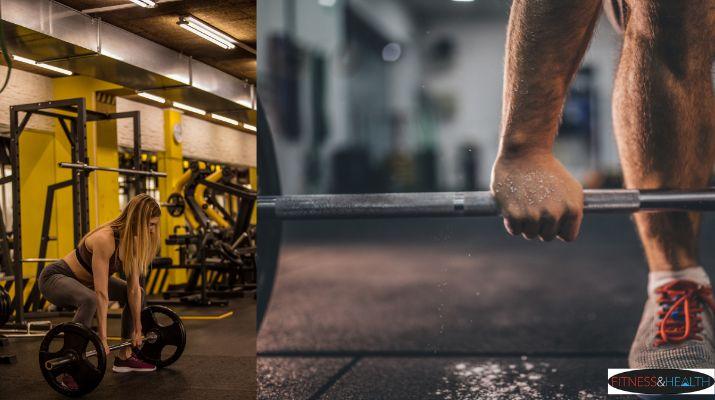
- Starting Position: Begin by standing with your feet wider than shoulder-width apart, with toes pointing slightly outward. The width will vary based on individual flexibility and comfort, but ensure that your shins are perpendicular to the ground when you’re in a bent-over position.
- Grip: Lean over without bending your knees and grasp the barbell. Your hands should be placed inside your legs. You can opt for a mixed grip (one palm facing you and the other facing away) or a double overhand grip.
- Lift-off: Engage your core, straighten your back, and begin lifting the bar by pushing through your heels. As you rise, think of it as a ‘push-pull’ motion; you’re pushing the ground away while pulling the bar up.
- Keep it Close: The bar should remain close to your body throughout the lift. This minimizes the risk of injury and ensures maximum power output.
- Full Extension: Continue lifting until your hips and knees are fully locked out. Ensure your chest is up and shoulders are back, avoiding any hunching.
- Descending: Reverse the motion by pushing your hips back first, then bending your knees once the barbell passes them, ensuring you maintain a straight back throughout.
Incorporating the Sumo Deadlift into your routine is an invitation to witness significant strength gains. However, it’s crucial to start with a weight that’s manageable, gradually increasing as your form and strength improve. Remember, in weightlifting, technique always precedes weight.
To delve deeper into the muscle groups specifically targeted by this lift, consider our detailed segment on the muscles worked during Sumo Deadlift. And if you’re keen on exploring other exercises that promise lower body strength, our article on Bulgarian Squat & Top Glute Exercises Explained serves as an insightful guide.
Muscles Targeted by Sumo Deadlift
The Sumo Deadlift is a complex and compound movement that engages multiple muscle groups, providing a holistic workout experience. However, the positioning and mechanics of this variant target certain muscles more intensively than its conventional counterpart. Here are the primary muscles targeted:
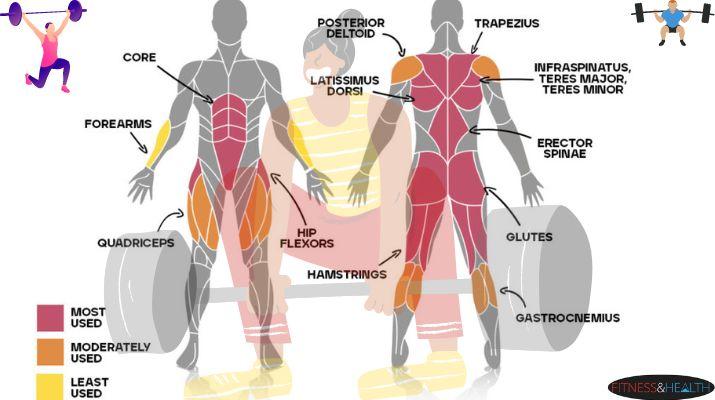
- Gluteus Maximus: These are the primary muscles of your buttocks and play a pivotal role in hip extension. Sumo Deadlifts significantly activate the glutes, promoting muscle growth and strength in this region.
- Hamstrings: Located at the back of your thigh, these muscles are responsible for bending your knee and extending your hip joint. The sumo variation demands a lot from these muscles due to the broader stance.
- Adductors: Commonly known as the inner thigh muscles, adductors are crucial in maintaining the wide stance in Sumo Deadlifts. They help control the outward and inward movements of your thighs.
- Quadriceps: Located in the front of your thighs, they are more engaged in the sumo variant than in conventional deadlifts. They play a vital role in extending your knee.
- Erector Spinae: These are the muscles that run alongside your spine. They maintain the integrity of your posture during the lift and support your back throughout the movement.
Strengthening these muscles not only contributes to an aesthetically pleasing physique but also promotes functional fitness. For instance, strong glutes and hamstrings can improve running performance, enhance jumping ability, and even help in everyday activities like climbing stairs or lifting heavy objects
Dumbbell vs. Barbell Sumo Deadlift
The choice between dumbbells and barbells for Sumo Deadlifts largely boils down to individual goals, current fitness levels, and available equipment. Here’s a contrast to aid you in making a choice:
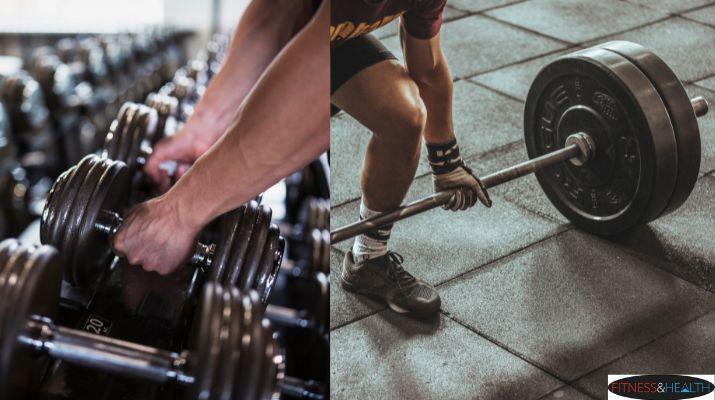
Dumbbell Sumo Deadlift:
- Advantages:
- Flexibility: Especially beneficial for beginners, using dumbbells allows for a more natural grip and can be less intimidating.
- Unilateral Training: It ensures both sides of the body are pulling their weight, addressing any muscle imbalances.
- Space & Equipment: Dumbbells are more accessible and require less space, making them perfect for home workouts.
- Scenarios: Ideal for those new to deadlifting, people with limited equipment, or those focusing on addressing muscle imbalances.
Barbell Sumo Deadlift:
- Advantages:
- Load Intensity: Barbells allow you to lift heavier, making it a favorite for those looking to build strength and muscle mass.
- Progressive Overload: It’s easier to incrementally add weight with barbells, essential for continuous progress.
- Stability & Control: The barbell’s structure offers a balanced load, which can be beneficial for maintaining a consistent form.
- Scenarios: Best for intermediate to advanced lifters focusing on strength gains, powerlifting, or those with specific weightlifting goals.
Both versions of the Sumo Deadlift have their merits, and neither is strictly “better” than the other. It’s about finding what aligns with your fitness journey. If you’re working on refining your deadlift technique before diving into heavier weights, our article on Hyperextension Magic: Gain Strength and Flexibility provides exercises that complement and strengthen the muscles used in deadlifting.
Sumo Deadlift High Pull
The Sumo Deadlift High Pull (SDHP) is an intriguing fusion of the traditional Sumo Deadlift and an upright row, making it a more compound movement that challenges the entirety of the body.
How It’s Performed:
- Starting Position: Much like the standard Sumo Deadlift, begin with a wide stance, toes slightly turned out, and grip the barbell (or a dumbbell) with hands placed inside your knees.
- Lift Phase: Engage your core and lift the weight, just as you would in a traditional Sumo Deadlift.
- High Pull Phase: As you rise and reach the top of the deadlift movement, rather than stopping, continue by explosively pulling the bar up to your chin, with elbows flaring out to the sides.
Benefits:
- Full-body Workout: By integrating the upright row into the deadlift, you’re not only targeting the lower body muscles but also significantly engaging the deltoids, trapezius, and upper back.
- Cardiovascular Boost: Given its compound nature, the SDHP can elevate your heart rate, blending strength training with a cardio workout.
- Functional Fitness: The movement mirrors real-world lifting and pulling motions, enhancing everyday functional strength.
Contrast with Traditional Sumo Deadlift:
While both exercises originate from the sumo stance, the Sumo Deadlift focuses more intensively on the lower body and back. In contrast, the SDHP brings in an upper body component, making it more dynamic but also demanding more coordination and technique.
Sumo Deadlift vs. Conventional Deadlift
Deadlifting, in its essence, is about lifting weight from the ground to a full hip and knee extension. However, how one approaches this can vary. Here’s a detailed juxtaposition of the two popular styles:
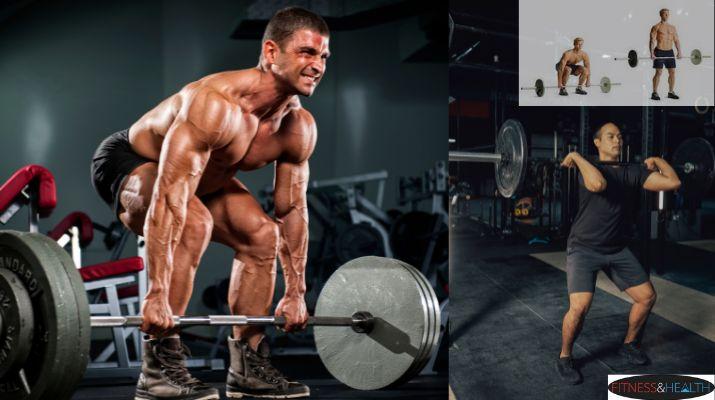
- Stance:
- Sumo: Requires a broader stance with feet spread out wide and hands gripping the bar inside the legs.
- Conventional: A narrower stance, approximately hip-width apart, with hands outside the knees.
- Muscle Engagement:
- Sumo: Emphasizes the glutes, hamstrings, quads, and adductors more predominantly.
- Conventional: Puts more stress on the spinal erectors and the muscles of the back, while still engaging the lower body.
- Biomechanics:
- Sumo: Due to the wide stance, the hips start closer to the bar, and the torso is more upright, reducing lumbar stress.
- Conventional: Requires a greater forward lean, meaning the hips start further from the bar.
- Suitability:
- Sumo: Often preferred by individuals with longer legs and shorter torsos or those looking to reduce stress on the lower back.
- Conventional: Favored by those with longer torsos or seeking a more holistic back workout.
- Benefits:
- Sumo: Engages a diverse set of muscles, often allowing one to lift heavier due to biomechanical advantages.
- Conventional: A more “natural” lifting position for many, it offers a comprehensive back and posterior chain workout.
Which One to Choose?: The decision between Sumo and Conventional Deadlift should be based on individual anatomy, comfort, and fitness goals. Some might find one form more natural or comfortable than the other. As always, it’s essential to ensure proper technique to reap the maximum benefits and prevent injuries. For a more well-rounded understanding of back workouts, don’t forget to read our guide on Demystifying Lat Workouts: The Ultimate Guide to a Well-Defined Back.
Step-by-step Guide: How to Sumo Deadlift
Sumo Deadlifting can seem daunting initially, but breaking it down step by step can help clarify the process. Let’s take you through each phase to ensure a safe and effective lift.
- Starting Stance:
- Positioning: Stand with your feet wider than shoulder-width apart, toes pointing slightly outward.
- Bar Placement: Ensure the bar is over the middle of your foot. This should be the point where your shoelaces begin.
- Grip:
- Bend at the hips, pushing your rear back.
- With your arms inside your knees, grip the barbell. You can use a mixed grip (one palm facing you, one facing away) or a double overhand grip.
- Set Your Back:
- Tighten your lats and engage your core.
- Imagine trying to cover your armpits with your shoulders. This action will set your lats and upper back correctly.
- Lifting Off:
- Initiate the motion by pushing from your heels.
- Push your hips forward while pulling the bar up. Ensure your chest and hips rise at the same time, keeping your chest up and your back in a neutral position.
- Completion:
- At the top of the movement, stand tall with a neutral spine, ensuring not to hyperextend your back.
- Lock your hips and squeeze your glutes.
- Returning the Bar:
- Push your hips back first, allowing the bar to clear the knees.
- Then, bend the knees and place the barbell back on the ground in a controlled manner.
Remember, the key to a successful Sumo Deadlift is maintaining a neutral spine throughout and driving the movement through your hips and legs, not your back. Regularly practicing Hyperextension Magic: Gain Strength and Flexibility can assist in enhancing the strength and flexibility required for this movement.
Top Benefits of Sumo Deadlift
The Sumo Deadlift is more than just another weightlifting exercise; it offers a multitude of benefits:

- Muscular Development: It intensely activates the glutes, hamstrings, quads, and adductors, promoting muscle growth in these regions.
- Reduced Lumbar Stress: The wider stance and more upright torso reduce the strain on the lower back as compared to the conventional deadlift.
- Increased Hip Engagement: With the wider stance, there’s greater hip activation, which can benefit athletes in sports requiring powerful hip extension.
- Functional Fitness: Mimicking the natural human movement of lifting, it enhances functional strength, making everyday tasks easier.
- Variety & Stimulation: Changing from conventional to sumo can introduce much-needed variety in a workout routine, preventing plateaus and keeping the training stimulating.
- Joint & Ligament Strength: Apart from muscle development, it also fortifies the ligaments and joints, particularly those in the hip, knee, and lower back regions.
- Posture Improvement: By strengthening the posterior chain and core, sumo deadlifts can contribute to better posture and spinal alignment.
Integrating the Sumo Deadlift into your regimen can be a game-changer, especially when combined with complementary exercises like those in the Bulgarian Squat & Top Glute Exercises Explained.
Avoiding Common Sumo Deadlift Mistakes
Sumo Deadlifting, like any technique-oriented exercise, has its set of pitfalls. Recognizing and rectifying these common mistakes can make the difference between reaping the benefits and risking injury.

Poor Foot Placement: Mistake:
- Setting feet too wide or too narrow.
Solution: Place feet wider than shoulder-width but in a position where you can generate the most force. Adjust according to your body mechanics.
Improper Grip: Mistake:
Gripping the bar too wide. Solution: Your arms should hang straight down from your shoulders, inside your knees. This provides maximum pulling power.
Not Engaging the Lats: Mistake:
Lifting with a relaxed upper back. Solution: Engage and tighten your lats. Think of protecting your armpits from someone trying to tickle you.
Starting with Hips Too Low: Mistake:
Beginning in a squat position. Solution: The sumo deadlift is not a squat. Start with your hips higher, ensuring they’re positioned between your knees and shoulders.
Rounding the Back: Mistake:
Lifting with a hunched back. Solution: Keep a neutral spine throughout the lift. Engaging the core and lats will help maintain this alignment
Overextending at the Top: Mistake:
Pushing the hips too far forward and leaning back at the top of the lift. Solution: Stand straight up, squeeze the glutes, and avoid leaning backward.
Neglecting the Hip Drive: Mistake:
- Solution: Push the hips forward as you lift the bar, ensuring they and the chest rise simultaneously.
If you find yourself making these mistakes, revisit the Step-by-step Guide: How to Sumo Deadlift to refine your technique.
Conclusion
The Sumo Deadlift is not just another lift; it’s a testament to the fusion of strength, technique, and functionality. Embracing its intricacies not only fortifies your physical frame but also challenges the very essence of your training discipline. Whether you’re a novice lifter or a seasoned athlete, the sumo deadlift offers layers of benefits waiting to be unearthed.
We urge you to weave it into your training tapestry. As with any journey, it’s the nuances and subtleties, the mistakes made, and the lessons learned that mold the experience. And once you’ve tasted the robust essence of the sumo, share your stories, your triumphs, and even your pitfalls. After all, fitness is as much about community as it is about individual growth.
So, set your stance, grip that bar, and lift not just the weight, but also your spirit and aspirations. And if you’re looking to amplify your training, delve into our HIIT Workouts – Ultimate Guide to Effective Home HIIT Cardio for Weight Loss for a dynamic switch-up.
FAQs on Sumo Deadlift
Conventional vs. Sumo Deadlift: What’s the difference?
Both are variations of the deadlift but with distinct stances and muscle engagements. The conventional deadlift uses a narrower stance with hands outside the knees. It tends to emphasize the hamstrings and lower back more. In contrast, the sumo deadlift uses a wider stance with hands inside the knees, emphasizing the quads, glutes, and adductors more. The sumo stance also allows for a more upright torso, which can reduce stress on the lower back.
What muscles does the Sumo Deadlift work?
The Sumo Deadlift primarily targets the glutes, quads, adductors (inner thigh muscles), hamstrings, lower back, and traps. Due to its wider stance, it provides more engagement of the hips and legs compared to the conventional deadlift.
Is the Sumo Deadlift easier than the Conventional Deadlift?
Easier” is subjective and can vary by individual. For those with hip mobility and a body structure that suits the wider stance, the sumo can feel more natural and less straining on the lower back. However, it might be challenging for others who lack the required hip mobility. It’s essential to find which variant aligns better with one’s body mechanics and comfort.
What is Sumo Deadlift?
The Sumo Deadlift is a variation of the traditional deadlift. Its name comes from its resemblance to the stance a sumo wrestler (Rikishi) adopts. It involves a wider foot placement with toes pointed slightly outward, and the lifter’s hands grip the barbell inside the knees. It’s renowned for its emphasis on leg and hip power and is often preferred by lifters with longer torsos or those looking to reduce lumbar strain.
How do you perform a Sumo Deadlift with a kettlebell?
The Sumo Deadlift with a kettlebell follows similar principles as the barbell version but utilizes a kettlebell. Here’s how:
- Begin by standing with a wide stance, feet spread beyond shoulder-width, with the kettlebell positioned between your feet.
- Bend at your hips and knees, ensuring a neutral spine, and grip the kettlebell handle.
- Engage your core, push through your heels, and lift the kettlebell by extending your hips and knees simultaneously.
- Once you stand upright, reverse the motion to place the kettlebell down gently.
The kettlebell variation can be a great introductory exercise for those new to the sumo stance, offering the benefits of the movement without the intimidation of a barbell.

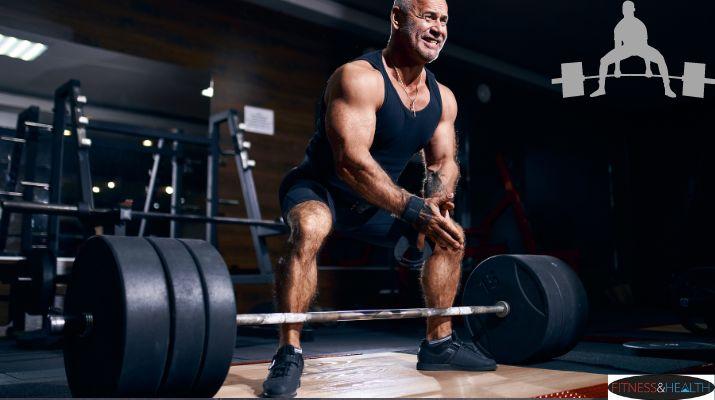
Pingback: Boost Health with Nitric Oxide Dump - Fit Health Spot